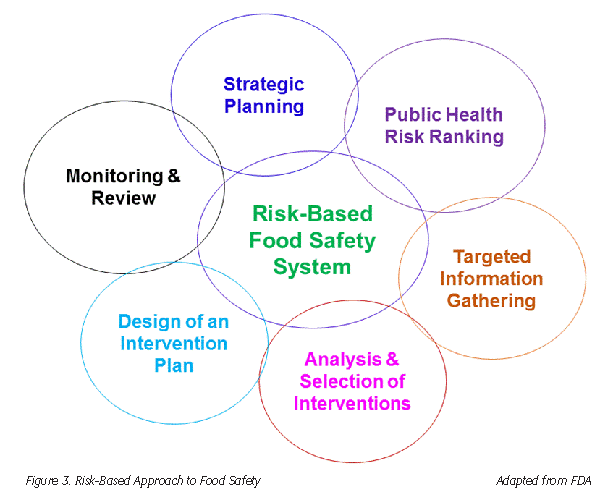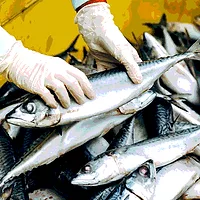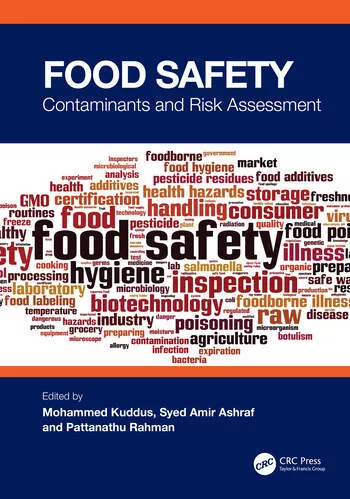Improving Capacity-Building for Food Safety Risk Assessment in Developing Countries

Developing countries have limited resources and high competing priorities. Therefore, to protect public health (and reduce the risk of food safety hazards) and achieve food and nutrition security, food safety must be clearly identified as a high priority. Not all food safety hazards pose the same risks/threats; there is a level where the presence of a hazard can be considered tolerable or acceptable. Therefore, a risk-based food safety approach is needed to prioritize the riskiest food safety hazards/food and allocate resources to control them at a country level. Keeping in mind that the ability of a country to succeed in ensuring food safety through the development of a risk-based food safety management system would be greatly enhanced if all responsible agencies (agriculture, health, trade, industry, economy, etc.) work together; taking into account that a food safety policy could be, in some cases, in conflict with other policies such as agriculture production, industrial development, etc. Developing countries need aid to establish such a system. In a survey conducted among 10 developed and developing countries, including Australia, Canada, China, Hong Kong, Indonesia, Japan, Philippines, Russia, Thailand and Vietnam, the lack of technical expertise and infrastructure to conduct risk assessment were reported to be the main constraints to the development of risk-based food safety management systems.
 Risk assessment is one of the main three components (risk assessment, risk management, and risk communication) of the risk analysis (Figure 1). In 2003, the Codex Alimentarius Commission adopted risk assessment principles for food safety framework. Risk assessment also plays an important role in international trade, as the Sanitary and Phytosanitary Measures (World Trade Organization) require members to conduct science-based risk assessments.
Risk assessment is one of the main three components (risk assessment, risk management, and risk communication) of the risk analysis (Figure 1). In 2003, the Codex Alimentarius Commission adopted risk assessment principles for food safety framework. Risk assessment also plays an important role in international trade, as the Sanitary and Phytosanitary Measures (World Trade Organization) require members to conduct science-based risk assessments.
Risk assessment (quantitative and qualitative) is a process for estimating the probability and severity of associated risks to a human health resulting from exposure to biological, chemical, or physical hazards in food. Risk assessment requires recognition of uncertainties where there is a limitation on the amount of available data or the interpretation of actual data is not highly accurate. Risk assessment results are important for making risk management decisions (policy, standards, legislation, etc.), monitoring the effectiveness of risk management measures, and conducting risk communication. Conducting risk assessment requires the effort of multidisciplinary experts in food science (including food safety, food microbiology, food chemistry, food processing, etc.), environmental science, public health, statistics, etc. An effective risk assessment should be: a) based on best available scientific evidence/data, b) transparent, c) unbiased, d) inclusive of adequate resources, e) able to identify and address uncertainty, f) able to consider all interrelated risks, g) evaluated regularly (or as needed), and h) well documented. A food safety risk assessment can be conducted for a particular, or all, potential chemical and microbial hazards in a particular or group of food. However, conducting risk assessments of foodborne microbial hazards is more complex than those of chemical hazards. As microorganisms react differently with hosts, their virulence and pathogenicity depend on their origins (animal, environmental, etc.), life cycles, etc. Microbial risk assessments also tend to encounter more data gaps and greater uncertainties. For these reasons, predictive models for microbial hazards are important. Monte Carlo simulation modeling has been extensively used in microbial risk assessment.
 Risk assessment consists of four components, as shown in Figure 2. These include the following:
Risk assessment consists of four components, as shown in Figure 2. These include the following:
• Hazard identification: In this step, data on hazards (biological, chemical, or physical) that might be present in a particular food or group of foods and capable of causing adverse health effects should be collected and evaluated.
• Hazard characterization: In this step, risk assessors develop complete qualitative and/or quantitative evaluation of the nature of the adverse health effects associated with particular level of exposure to a hazard.
• Exposure assessment: This step provides scientific insight on the presence of the hazard in the food consumed. It also provides information on the potential effects of a hazard in specific populations, as well as the qualitative and/or quantitative evaluation of the likely intake of a hazard via food. It combines information on the prevalence and concentration of the hazard(s) in food and the likelihood that the consumer will be exposed to this hazard.
• Risk characterization: This step is the result of the integration of hazard identification, hazard characterization, and exposure assessment to estimate the probability and severity of an adverse health effect.
 In the U. S., the U.S. Food and Drug Administration (FDA) uses a risk-based approach to food safety, which contains six steps (Figure 3).
In the U. S., the U.S. Food and Drug Administration (FDA) uses a risk-based approach to food safety, which contains six steps (Figure 3).
Step 1: Strategic planning. In this step and in the other five steps, the team shall consult with important stakeholders. The team identifies food safety related public health objectives and establishes a risk management plan and metrics (to measure performance).
Step 2: Public health risk ranking. In this step, the team develops tools to rank public health risks based on public health outcomes and reports the results to stakeholders and requests feedback.
Step 3: Target information gathering. In this step, the team gathers and identifies information related to risks; it decides if additional information (such as research, surveillance, survey, and baseline data) on high-priority and/or uncertain risks are needed, and identifies intervention analysis needs for priority risks.
Step 4: Analysis and selection of interventions. In this step, the team develops an appropriate level of protection for each high-priority risk; develops options to improve situations; uses risk assessment and other technical analysis to evaluate these options; and reports result and request feedback.
Step 5: Design of an intervention plan. In this step, the team develops implementing plan; allocates needed resources; and implements interventions.
Step 6: Performance monitoring and review. In this step, the team collects, analyzes, and interprets data and evaluates intervention results; it shares results with stakeholders and requests feedback, and modifies the entire process continuously or as needed to accomplish objectives.
Risk management (the second component of the risk analysis) is defined by Codex as “the process of weighing policy alternatives in consultation with interested parties, considering risk assessment and other factors for the health protection of consumers and the promotion of fair trade practices, and, if needed, selecting appropriate prevention and control options.” Risk management normally starts before risk assessment starts. The risk management team works closely with others teams/experts including the risk assessment team, risk communication team, food science experts, public health experts, nutritionists, economists, etc. Risk managers, through available information and dialogues with risk assessors and stakeholders, must first determine the current situation/issues, identify the food health and safety issue, and determine the availability of resources to address these issues. This will help to decide if a risk assessment is required.
Risk communication (the third component of the risk analysis) is defined as the interactive exchange of information and opinions throughout the risk analysis process concerning hazards and risks, risk-related factors, and risk perceptions among risk assessors, risk managers, consumers, industry, the academic community, and other interested parties, including the explanation of risk assessment findings and the basis of risk management decisions.
Governmental and regulatory organizations use risk ranking for the prioritization of the allocation of resources to mitigate food-related hazards and their anticipated public health impacts. Risk ranking is a risk assessment tool (decided by risk assessment team). Several ranking methods can be used for ranking food hazards including risk assessment (most widely used method), cost of illness, expert judgment, flow charts, health adjusted life years, risk matrix, risk ratio, scoring, etc. Risk prioritization is a risk management tool (decided by the risk management team) to determine the importance of one risk over another, considering a wide range of factors (in addition to public health such as economic constraints, the environmental impacts, the food industry, etc.) that might influence prioritization or decision making.
Developed countries/donors should assist developing countries in establishing food safety risk assessment centers (similar to the center in China[1,2]) to be able to conduct their own risk assessments and develop risk-based food safety systems.
Barakat Mahmoud, Ph.D., is an international food safety expert with early 30 years of experience in food safety. He has provided technical assistance in food safety in several developing countries in Africa, Asia, Central America, and the Caribbean.
References
1. www.fda.gov/media/87744/download.
2. en.cfsa.net.cn/.
Looking for quick answers on food safety topics?
Try Ask FSM, our new smart AI search tool.
Ask FSM →








